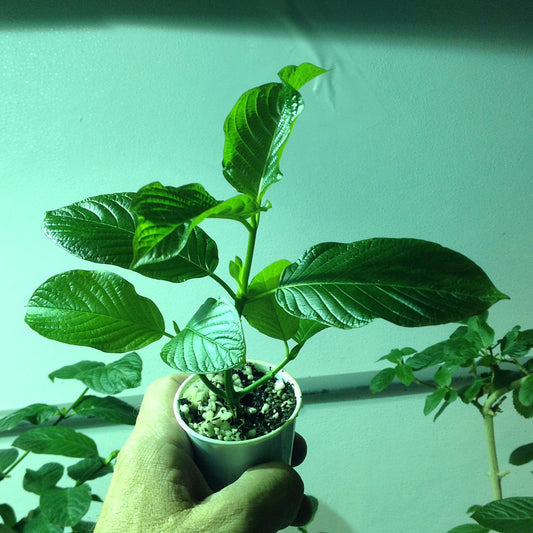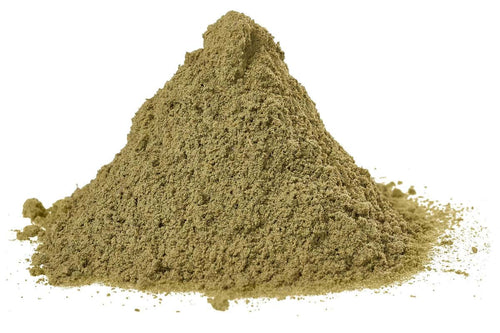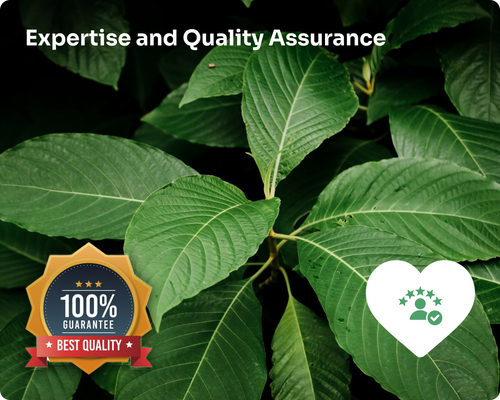Key Takeaways:
- Origin stories provide valuable context for kratom consumers
- Understanding kratom's cultural roots enhances consumer knowledge
- Geographical origins impact kratom's characteristics
- Origin stories help differentiate kratom varieties
- Ethical sourcing and sustainability are important aspects of kratom's origin
1. The Importance of Kratom's Southeast Asian Roots
Kratom comes from the tropical forests of Southeast Asia. Its scientific name is Mitragyna speciosa, and it has been used by local cultures for a very long time. Knowing where kratom comes from helps us understand its history and how people have used it over the years. The connection between kratom and where it grows gives us important information about what it can do and why it might be helpful.
Kratom grows well in countries like Thailand, Malaysia, and Indonesia. The warm, wet climate and special soil in these places are perfect for kratom trees. These specific conditions affect how the kratom plant grows and what kinds of natural chemicals it produces. This is why kratom from different places can have different effects. Exploring our bulk kratom wholesale options can show you how kratom from various regions can be different.
2. Traditional Uses and Cultural Significance
In Southeast Asia, kratom has been more than just a plant for a long time. It's been an important part of daily life, traditional medicine, and social customs for many generations. Learning about these traditional uses helps us understand why kratom is important culturally and how much knowledge people have gathered about it over hundreds of years.
Workers in these areas have used kratom leaves to feel more energetic and less tired during long work days in the hot, humid weather. This shows that kratom might help with energy and focus. Kratom has also been used in social gatherings and ceremonies, showing it's important in the culture beyond just its physical effects. Some communities have used kratom in traditional medicine for various health issues, which shows how versatile the plant can be.
Discover our premium Mitragyna Speciosa products to connect with this rich cultural heritage and experience the qualities that have made kratom valuable for centuries.
3. The Journey from Tree to Product
Kratom's story doesn't end in the forest; it goes through a careful process of harvesting, drying, and preparation. Understanding how kratom goes from a leaf on a tree to a product you can use is an important part of its story. This journey involves careful picking, drying, and processing methods that have been improved over many years, combining old knowledge with new quality control practices.
Kratom farmers use their extensive knowledge, often passed down through families, to pick leaves at the right time. This ensures the best quality and the right amount of natural chemicals in the leaves. When the leaves are picked can greatly affect the final product. How these leaves are processed after picking – including how they're dried and stored – can also change the kratom's properties. This careful process shows how important skilled growing and processing are in making high-quality kratom products. Exploring our live kratom trees can give you a look at how the plant grows naturally and help you appreciate the journey it takes to reach consumers.
4. Understanding Kratom Varieties Through Their Origins
Did you know that different kratom varieties often get their names from where they grow? This isn't just for marketing; it shows how much where kratom grows affects its characteristics. For example, Bali kratom comes from the Indonesian island of Bali, which has a special climate and soil. Maeng Da is a name for high-quality kratom that originally came from Thailand.
These regional differences can really change how the plant grows, what natural chemicals it has, and its overall characteristics. The specific conditions of each area – like how high up it is, how much rain it gets, and what minerals are in the soil – contribute to the unique properties of different kratom types. Understanding these origins helps people appreciate the small differences between each variety. This lets them make better choices based on what effects they want or what they personally like. Explore our wide selection of kratom leaf varieties to experience these regional differences yourself and see how geography shapes the diverse world of kratom.
5. The Role of Climate and Soil in Kratom's Properties
Just like with grapes for wine, where kratom grows really affects its qualities. The idea of "terroir" - how environmental factors affect a crop - applies to kratom in interesting ways. The soil, rainfall, temperature changes, and sunlight in different regions all play a big part in shaping kratom's characteristics, including its natural chemicals and overall strength. This environmental influence is a key factor in what makes each kratom variety unique and sought-after for specific properties.
For instance, kratom grown in the wet rainforests of Borneo might be different from kratom from the coastal areas of Thailand. The rich soil of the rainforest can lead to a different balance of natural chemicals than the mineral-rich coastal soils. Also, differences in how high up the plant grows and how much sunlight it gets can affect how the plant grows and what chemicals it produces. Understanding these small differences helps people appreciate why certain types of kratom might be better for their needs and preferences. It also shows why it's important to protect different kratom habitats to keep the rich variety of types available.
Learn about our Mitragyna Hirsuta products, another plant affected by where it grows, to understand more about plant diversity and how growing conditions affect plant properties.
6. Ethical Sourcing and Sustainability in Kratom's Origin Story
An important part of kratom's modern story is the growing focus on ethical sourcing and sustainability. As kratom becomes more popular worldwide, there's more awareness about how it's harvested and how this affects local communities and environments. This part of kratom's story is crucial for people who want to make sure their choices support responsible practices and help the regions where kratom is grown.
Responsible kratom companies work closely with local farmers to ensure fair practices and sustainable harvesting methods. This teamwork not only protects the kratom trees and surrounding ecosystems but also supports the economic well-being of the communities where kratom comes from. Sustainable practices include careful harvesting to allow trees to regrow naturally, planting new trees, and using environmentally friendly processing methods. By focusing on these ethical considerations, the kratom industry can help preserve both the plant's natural habitats and the traditional knowledge about growing it.
Discover our commitment to quality with our premium kratom extracts, sourced with these ethical considerations in mind. Our products show our dedication to supporting sustainable practices and fair partnerships with kratom-producing communities.
7. The Evolution of Kratom: From Traditional Use to Modern Applications
Kratom's story is one of remarkable change, spanning centuries of traditional use in Southeast Asia to its current global presence. While it has been used traditionally for centuries, its journey to other parts of the world has led to new understandings, applications, and scientific interest. This global spread has brought both opportunities for broader appreciation of kratom's potential benefits and challenges in terms of regulation and public perception.
Today, scientists around the world are studying kratom, exploring its complex natural chemicals and potential health benefits. This scientific interest has led to a deeper understanding of how kratom works and how it might be useful in various areas of health and wellness. However, it's important to remember and respect its traditional roots and the wisdom gathered over generations of use. This balance between honoring traditional knowledge and embracing modern scientific research is an important part of kratom's ongoing story, shaping its future in a global context.
Explore our range of powdered kratom leaves to see how traditional kratom is adapted for modern use, combining centuries-old wisdom with contemporary production standards.
8. Kratom Alkaloids: Nature's Diversity Reflected in Origin
Kratom's effects come from its natural compounds called alkaloids, with the most well-known being mitragynine and 7-hydroxymitragynine. Interestingly, the levels of these alkaloids can vary a lot depending on where the kratom is grown. This shows the incredible diversity of nature and how much the environment affects plant chemistry. This variability is a key part of kratom's origin story, highlighting how deeply the plant is connected to where it grows.
Things like soil composition, climate, altitude, and even how old the tree is can influence the alkaloid content and ratios. For example, kratom grown in rich volcanic soil might have different alkaloids compared to kratom from coastal regions. Similarly, trees that get more sunlight may produce different levels of certain alkaloids than those growing in shadier spots. This is why kratom from different places might have slightly different properties and effects. Understanding this natural variability helps people make informed choices about the kratom they use, picking types that match their specific preferences or needs.
Learn about our high-quality bulk kratom extracts with consistent alkaloid content for a reliable experience. These products show how traditional kratom growing can be combined with modern extraction techniques, offering a dependable and potent option for careful consumers.
9. The Impact of Harvesting Techniques on Kratom Quality
How kratom is harvested plays a big role in determining its final quality, strength, and overall characteristics. Traditional harvesting methods, passed down through generations of kratom farmers, often focus on picking leaves at the right time and in the right way to keep their properties. These old techniques are based on a deep understanding of how the plant grows and the subtle signs that show when it's best to harvest.
Modern harvesting techniques try to balance efficiency with quality, using scientific knowledge about how alkaloids develop in kratom leaves. The timing of the harvest is crucial – leaves picked too early might not be strong enough, while those harvested too late might have an undesirable mix of alkaloids. How the leaves are dried after harvesting also greatly affects the final product. Some methods keep more of the plant's natural alkaloids, while others might enhance certain characteristics. The whole process, from choosing which leaves to pick to the final packaging of the product, contributes to the unique properties of each kratom variety. This is why understanding where kratom comes from and how it's harvested is an essential part of its story, directly influencing what the end user experiences.
Discover our carefully harvested crushed kratom leaves to experience the results of quality harvesting practices. These products show the care and expertise that go into producing premium kratom, from tree to final product.
10. Preserving Kratom's Heritage Through Education
As kratom becomes more widely known and used around the world, teaching consumers about its origins, traditional uses, and cultural importance becomes increasingly crucial. This knowledge helps preserve kratom's rich cultural heritage and promotes responsible, informed use. Understanding the historical context of kratom use in its native regions provides valuable insights into its potential benefits and proper application, fostering a deeper appreciation for this plant beyond its immediate effects.
Understanding kratom's story helps consumers make informed decisions and appreciate the plant's significance beyond its properties. It encourages respect for the cultures and communities where kratom comes from, promoting ethical consumption and supporting sustainable practices. Education about kratom's origins also helps clear up myths and misunderstandings, contributing to a more accurate public perception of this often misunderstood plant. By learning about kratom's journey from Southeast Asian forests to global markets, consumers can develop a more complete view of its place in both traditional and modern contexts.
Explore our educational resources and bulk kratom gummies to learn more about kratom's heritage. Our commitment to education extends beyond our products, aiming to empower consumers with knowledge about kratom's rich history and responsible use.
11. The Future of Kratom: Balancing Tradition and Innovation
As kratom continues to gain attention worldwide, its story is still being written, with each chapter presenting new challenges and opportunities. The future of kratom lies in finding a careful balance between respecting traditional knowledge and embracing modern scientific understanding and applications. This balance is crucial for ensuring that kratom remains a valuable botanical resource while adapting to today's needs and standards.
Ongoing research into kratom's properties and potential uses is shaping its future, with scientific studies exploring its complex chemistry and potential health applications. At the same time, there's a growing appreciation for the wisdom of traditional practices, recognizing the value of centuries-old knowledge in guiding modern use. The kratom industry is changing to meet increasing demand while addressing concerns about quality, safety, and sustainability. New ideas in growing, processing, and product development are emerging, aiming to enhance the benefits of kratom while minimizing potential risks. This mix of tradition and innovation will likely define kratom's role in the coming years, potentially opening new ways for its use while preserving its cultural importance.
Discover our innovative kratom extract gummies, a modern take on traditional kratom use. These products represent the combination of ancient plant wisdom with modern formulation techniques, offering a convenient and precise way to experience kratom's benefits.
12. Empowering Consumers Through Origin Knowledge
Understanding kratom's origin story helps consumers make informed choices, encouraging a more responsible and appreciative approach to kratom use. This knowledge helps people navigate the diverse world of kratom products with confidence, understanding the differences between different types and their potential effects. By appreciating the cultural significance of kratom, consumers can develop a deeper respect for the plant and the communities that have grown it for generations.
By learning about kratom's journey from Southeast Asian forests to global markets, consumers can develop a better understanding of the factors that influence kratom quality, strength, and sustainability. This knowledge enables them to make choices that match their values, whether prioritizing ethically sourced products, supporting traditional farming communities, or seeking specific strain characteristics. Informed consumers are better equipped to participate in discussions about kratom regulation and policy, advocating for approaches that balance consumer access with necessary safeguards. Moreover, understanding the complexities of kratom's origin and production encourages a more nuanced view of its place in both traditional and modern contexts, promoting responsible use and supporting ethical practices in the kratom industry.
Explore our full range of Mitragyna Speciosa products and learn about their origins to become a more informed consumer. Our commitment to transparency and education aims to empower you with the knowledge needed to make the best choices for your kratom experience.
Conclusion
The role of origin stories in kratom consumer education is very important. These stories provide essential background, help us understand kratom's diverse properties, and promote responsible use. By appreciating where kratom comes from, how it's grown and harvested, and its cultural importance, consumers can make better decisions about their kratom use and help ensure a sustainable future for this industry.
As kratom continues to gain attention worldwide, preserving and sharing these origin stories becomes even more important. They connect us to kratom's rich heritage while guiding its future in a global context. These stories highlight the importance of ethical sourcing, sustainable practices, and respect for traditional knowledge. Whether you're new to kratom or have used it for a long time, understanding its origins adds depth to your knowledge and appreciation of this interesting plant. It encourages a complete view of kratom that goes beyond its immediate effects, recognizing its place in cultural, environmental, and scientific contexts. As the kratom industry grows, these origin stories will remain an important link between past traditions and future innovations, ensuring that kratom's journey continues to be one of respect, understanding, and responsible care.
Key Points About Kratom
- Kratom is a tropical tree native to Southeast Asia
- It has been used in traditional medicine for centuries
- The tree grows naturally in Thailand, Malaysia, and Indonesia
- Kratom leaves contain various compounds
- Historically, workers used kratom to combat fatigue
- Traditional uses include pain management and mood enhancement










